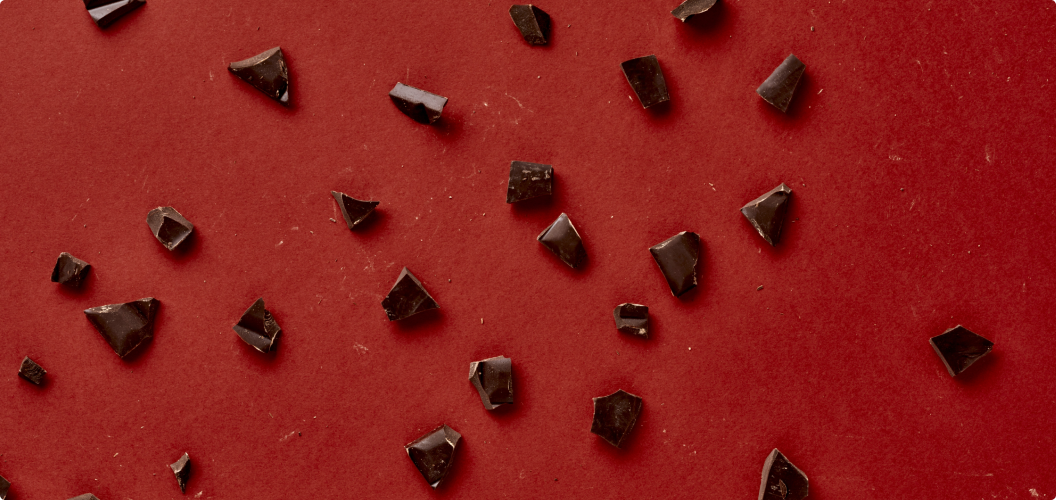Short history of chocolate
Chocolate : a long and passionate history!

Chocolate history finds its origin in the Aztec period. As you will discover from the brief history below chocolate has evolved a lot as it crossed centuries. It was once a bitter drink used in Central America for its strengthening and aphrodisiac effects. It is now a sweet food appreciated in the whole world. It was once a precious foodstuff reserved for royalty and upper class. Now people from any horizon or any age can enjoy chocolate. But there is one point that has never changed throughout history: chocolate has always been a food that has raised a lot of passions.
Origins
1400 BC
In 2007, anthropologists announced the discovery of cacao residue on pottery excavated in Honduras that could date back from 1400 BC. The sweet pulp of the cacao fruit, which surrounds the beans, was fermented into an alcoholic beverage of the time.
12th Century
The Mayan and Aztec cultures have extended in Central and South America. They both used cocoa beans in religious and sacred rituals. It was also used by the Mayans to trade with other populations. The Aztecs attributed the creation of the cocoa plant to their god Quetzalcoatl who, descended from heaven on a beam of a morning star carrying a cocoa tree stolen from paradise. In both the Mayan and Aztec cultures cocoa was the basis for a thick, cold, unsweetened drink called xocoatl considered as a health elixir. Since sugar was unknown to the Aztecs, different spices were used to add flavour, such as musk, cinnamon or hot chili peppers.
15th Century
Christopher Columbus brings back a few cacao beans to King Ferdinand. However, they were mostly ignored in favor of the many other treasures he had found.
At the conquest of Europe
16th Century
The Spanish explorer Hernan Cortès conquers part of Mexico. At his arrival he is mistaken for the Aztec god Quetzalcoatl (which return was expected) by the population. Cortez notices the usage and value that the court of Emperor Montezuma give to cocoa and starts a cocoa plantation to “grow money” in the name of Spain.
Cortez has brought cacao beans, equipment and recipes for preparing chocolate to the Spanish court of King Charles V. The Spanish replaced the pepper with sugar and kept the cinnamon to make the bitter cacao a beverage they like. Spain kept the secret of cocoa from the rest of Europe for nearly a century to keep the monopoly of cocoa trade.
17th Century
Chocolate starts spreading throughout Europe:
Chocolate is introduced in Germany.
Cocoa beans arrive in France in the dowry of Spanish Princess Maria Theresa to her fiancé Louis XI.
First official statement about chocolate describing the medicinal properties of chocolate (stimulating the healthy functioning of the spleen and other digestive functions). Also considered as aphrodisiac.
Opening of the first chocolate house in London. Chocolate remains a beverage for the elite. The English introduced a change: instead of water, they added milk.
Chocolate pastilles are introduced in England.
Chocolate is introduced in Switzerland following the visit of Zurich Mayor in Brussels.
The industrial revolution
18th Century
Chocolate is back on the American continent. Boston apothecary shops are advertising and selling chocolate imported from Europe.
The English man Joseph Fry (Bristol) invents a steam engine to grind cocoa beans and launches the manufacture of chocolate on a large scale.
19th Century
The industrial revolution will make mass-production of chocolate possible and help cut prices.
The first pressed chocolate tablets, pastilles and figures are produced in Belgium.
The first gianduja is created in Italy: chocolate mixed with hazelnut paste.
Daniel Peter of Vevey, Switzerland, invents milk chocolate.
Creative times
20th Century
The Swiss Jules Séchaud creates a machine to manufacture filled chocolates, creating the first box of filled chocolates.
Chocolate bars become individual-sized (30g and 45g) and are made in tablet shapes for snacking.
How chocolate is made
Explaining the process of manufacturing chocolate.

Mixing
The cocoa paste (or mass) resulting from the crunching and grinding of fermented and dried cocoa beans is mixed with sugar and cocoa butter to make it more liquid. Depending on the recipe powdered milk and vanilla can also be added. The paste is then refined so as to obtain ultra fine chocolate.
Conching
This crucial and subtle stage of the process gives the smoothness and the taste of the chocolate. In practice, the paste is heated and receives more cocoa butter, soya lecithin and potentially vanilla extract
Tempering
The temperature of the paste must gradually reduce and maintained before it is reheated. The paste is then crystallized in a cold tunnel so as to give the finished product its crunchiness and shine.
Moulding
Moulding and coating varies depending on the type of chocolate that is made. For solid bars for instance, the chocolate is poured into moulds which cross vibrating tables to ensure the chocolate is evenly spread. It is then cooled to make it easy to remove the mould. For filled bars, the first stage is identical except that after the vibrations it is turned over to empty the moulds and keep only a thin layer of chocolate. Once it has hardened, the shells are filled and closed with a layer of liquid chocolate. And it is hardened again before the mould is removed.